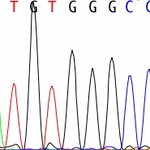Cancer Research

The p53 regulatory network, the 'guardian of the genome' has, during the course of human evolution, created additional safeguards in human genes to further guard against DNA damage that could a variety of genetic diseases, according to an international team of scientists writing in the Proceedings of the National Academy of Sciences.
Because genetically engineered mouse models are increasingly powerful tools in understanding the risks and mechanisms of human diseases – and rodents do not have the same evolution-based safeguards in p53 function as humans – the study also underscores the need…

All multicellular animals have an innate immune system. When bacteria, parasites or fungi invade the organism, small protein molecules are released that eliminate the attackers. Scientists of the German Cancer Research Center (Deutsches Krebsforschungszentrum, DKFZ) have now discovered a new molecule that plays an important role in triggering the innate immune response of the fruit fly Drosophila, mice and even humans.
The cells of the innate immune system recognize hostile invaders with the aid of receptors on their surface: The moment these receptors recognize a foreign structure, they…

CAMBRIDGE, Massachusetts, January 16 /PRNewswire/ --
Mersana, a cancer therapeutics company, announced today that John H. van Duzer, Ph.D. has joined the company as Vice President of Manufacturing & Pharmaceutical Sciences.
"John van Duzer adds a critical component to the Mersana management team with his manufacturing and development experience," said Julie A. Olson, Ph.D., President and CEO at Mersana. "As a clinical development-stage company, manufacturing plays a key role in the advancement of our products and John's contributions will impact our entire pipeline. We are also fortunate…

Yesterday I had the privilege of attending a workshop at the NIH on the National Cancer Institute Clinical Development of Small Molecules:
This one-day workshop will provide specialized training and information to NCI-supported investigators who plan to undertake clinical development of novel concepts and who are directly involved with implementing translational clinical research. Individuals will benefit from the opportunity for direct interaction with FDA’s Center for Drug Evaluation and Research and NCI’s Developmental Therapeutics Program senior staff.
I am grateful to Dan Zaharevitz…

A fundamental difference in the way males and females respond to chronic liver disease at the genetic level helps explain why men are more prone to liver cancer, according to MIT researchers.
“This is the first genome-wide study that helps explain why there is such a gender effect in a cancer of a nonreproductive organ, where you wouldn't expect to see one,” said Arlin Rogers, an MIT experimental pathologist and lead author of a paper that appeared last month in the journal Cancer Research.
Men develop liver cancer at twice the rate of women in the United States. In other countries,…

Writing in Genes & Development, a research team led by Dr. Richard Behringer at MD Anderson Cancer Center report they they switched the mouse Prx1 gene regulatory element with the Prx1 gene regulatory region from a bat and the resulting transgenic mice displayed abnormally long forelimbs despite being separated by millions of years of evolution.
While forelimb length is just one of several key morphological changes that occurred during the evolution of the bat wing, this unprecedented finding demonstrates that evolution can be driven by changes in the patterns of gene expression, rather…

Normal yeast organisms live about a week but using a combination of dietary and genetic changes, biologists have created baker’s yeast capable of living to 800 (in yeast years) without apparent side effects.
Study leader Valter Longo of the University of Southern California and his group put baker’s yeast on a calorie-restricted diet and knocked out two genes, RAS2 and SCH9, that promote aging in yeast and cancer in humans.
“We got a 10-fold life span extension that is, I think, the longest one that has ever been achieved in any organism,” Longo said.
“I would say 10-fold is pretty…

HALIFAX, Canada, January 14 /PRNewswire/ -- ImmunoVaccine Technologies Inc. (IVT), announced today that it had signed licensing agreements for Pfizer Animal Health to apply IVT's novel VacciMax(R) vaccine platform to the potential development of future, particular livestock vaccines.
Although terms of the agreements were not disclosed, IVT will receive upfront signing fees, milestone and royalty payments.
"We are excited that Pfizer plans to commercialize our technology," said Dr. Randal Chase, President and CEO of ImmunoVaccine Technologies. "We look forward to further discussions with…

Of all the 'Greatest Scientific Breakthroughs' of 2007 heralded in the pages of various newspapers and magazines this past month, perhaps the most unsung one is the entrance of next-generation DNA sequencing onto the stage of serious research.
Prior to this year, the latest sequencing technologies were limited in their usefulness and accessibility due to their cost and a steep technical learning curve.
That's now changing, and a group of recent research papers gives us a hint of just how powerful this new technology is going to be. Not only will next-generation sequencing be the biggest…

New ways to make sure people are adequately informed about the risks and benefits of taking part in a clinical trial can be field-tested for effectiveness as vigorously as new medical treatments themselves, a study led by a Johns Hopkins bioethicist suggests.
Informed consent, a mainstay of ethical clinical trials, is the process by which potential research subjects are asked to decide whether to participate in research. The bedrock components of the process include gaining an understanding of the study’s goals and benefits, as well as the risks and roles of the subjects themselves.
“Many…